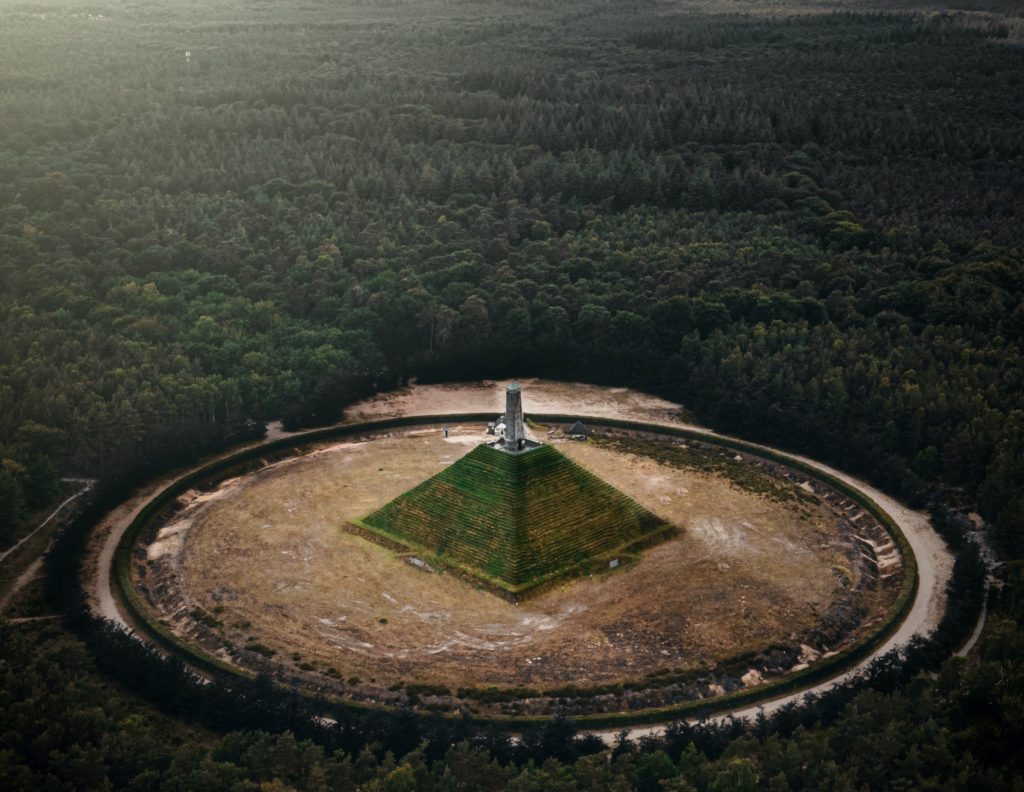Why Do The Dutch Have A Pyramid? Boredom, Actually. Posted by Sten on Dec 16, 2021 in Culture, Travel & Geography
When you think of pyramides (pyramids), you probably think about hot deserts, scorching heat and merchants on camelback with the majestic structures in the background. So when I tell you that there’s a pyramid in the Netherlands, you probably think it must be some pyramide the Dutch got from Egypt! But that’s not the case at all. If pyramids evoke an image similar to the one I presented above, then get ready to be surprised for a bit of a different take on what a pyramide is!
The French are coming
The Netherlands is one of the oldest Republieken (republics) in the world. Started as De Republiek der Zeven Nederlanden. In 1648, when Europe was a tapestry of smaller kingdoms and massive empires, the Netherlands formed the exception without a single person at the head of their leadership.
Today, however, the tables have turned. The Netherlands now is one of the few surviving European monarchies! So what happened?
Napoleon did. That’s what happened. Soon after he conquers France in 1799, he also holds a grip over the Netherlands. This introduced monarchy would form the basis for the Monarchie that we have today.
And this is also the time that this pyramide was built. So was it some kind of honorary construction for Napoleon? Actually, no. It was built out of boredom.
Killing time
In order to fight off the coalition forces that formed against the French empire, French general Auguste de Marmont set up a legerkamp (army camp) close to Utrecht, in the center of the Netherlands in 1804. By bringing together different military groups, he managed to create a formidable leger (army).
But these were defensive forces, so they basically just sat there, in case the British would attack again. So being a soldier there, just waiting for something to happen, must have been quite boring.
That’s when the general had an excellent idea: let’s build something!
In 1798, during Napoleon’s Egypt expedition, De Marmont had seen the grand pyramids of Gizeh with his own eyes. The stair-like pattern, the formidable size… It was inspiring. So 6 years later, it formed the basis for his construction of the Pyramide van Austerlitz (Pyramid of Austerlitz).
Built in just 27 days, this sand hill clad with grass resembles the Great Pyramid of Gizeh in some ways. The stair-like pattern was adopted, and built up to a height of 23 meters. Copying another Egyptian icon, a wooden obelisk of another 13 meters was placed on top.
This grass hill was then known as the Marmontberg (Hill of Marmont). De Marmont actually had plans to improve on the design, clad it with bricks and place a statue of Napoleon on top. However, he never managed to do this.
In 1805, De Marmont and his army were sent to the south of Germany, where the French clashed with Austrian and Russian coalition forces close to the town of Austerlitz (close to today’s Brno, a city in the Czech Republic). The French left this Slag bij Austerlitz (battle of Austerlitz) as victors, and this was why the name of the place next to the pyramid and the name of the pyramid itself were changed to Austerlitz.
The legacy of the pyramid
In the following years, the pyramid went through some changes. In 1894, the stone obelisk was placed. Due to rain and stormy weather, the pyramid kept falling apart. Now, the obelisk has even started leaning – something that the foundation responsible for the upkeep embraces to represent the bewogen (moved) history of the place. It is also a Rijksmonument (National Monument) and the last monument left from the Napoleonic time in the Netherlands. And you can climb it for a great view over the Utrechtse Heuvelrug!
Would you like to visit this special place in the Netherlands? Get an idea from the video above, and let me know in the comments!

Build vocabulary, practice pronunciation, and more with Transparent Language Online. Available anytime, anywhere, on any device.




